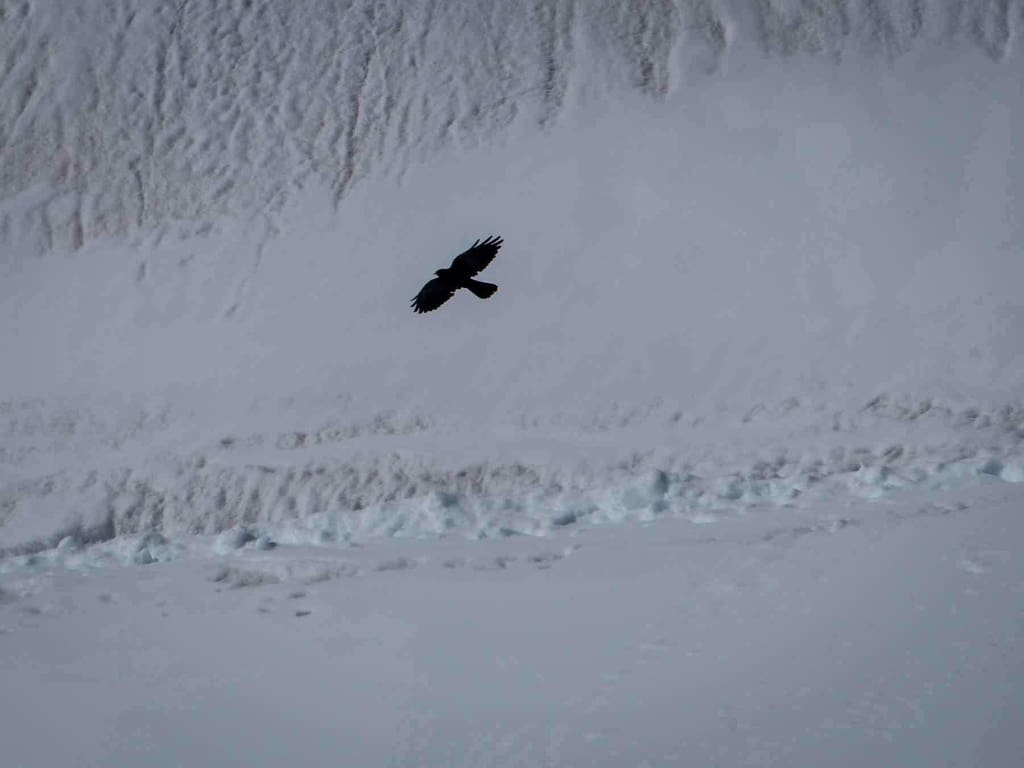September of 2016 finds me in Grindelwald — a place name a few hundred years older than Harry Potter — staring into the stately grey pinnacles of the Swiss Alps and experiencing an inexplicable rush of déjà vu. There is a wall-calendar familiarity about this indescribably breathtaking scenery, which I have never before beheld in the flesh. I find myself gasping, and it is not the altitude.

The infinity surrounding me is a Legoland tableau: even the sky is a textbook texture of Pantone blue, white and grey. Bright red-roofed houses with potted geraniums smiling out of windowsills, some with marble-eyed cats too bored to dream. Acres of cropped meadows stippled with stands of dark conifer and luminous plane, chestnut and oak. Orderly orchards of fruit trees sliced up by trim, well-worn paths of grit and scree, all knit together by winding country roads and knifed up into ribbons of immaculate tarmac that disappear into tunnels. The Swiss like to hide their highways inside their mountains.
Cows everywhere. Patchwork cows. Piebald cows. Dun-and-tan cows. Fat and unconcerned as they graze, eyelashes a-flutter, bells jangling, udders turgid with grass-fed goodness. Elderly farmers in dungarees determinedly chase down frisky calves with measured patience. A reassuring aroma of dung urges me to check my shoe soles from time to time.
Then there are the trains, which really lend the finishing touch to the toy-town effect. The Swiss have trains for every terrain, as I had observed on my first visit to this mountain country in 2013. In 2016 I was fortunate to visit the fabled Jungfrau region and take in its glorious alpine vistas by train.
In an alpine wonderland
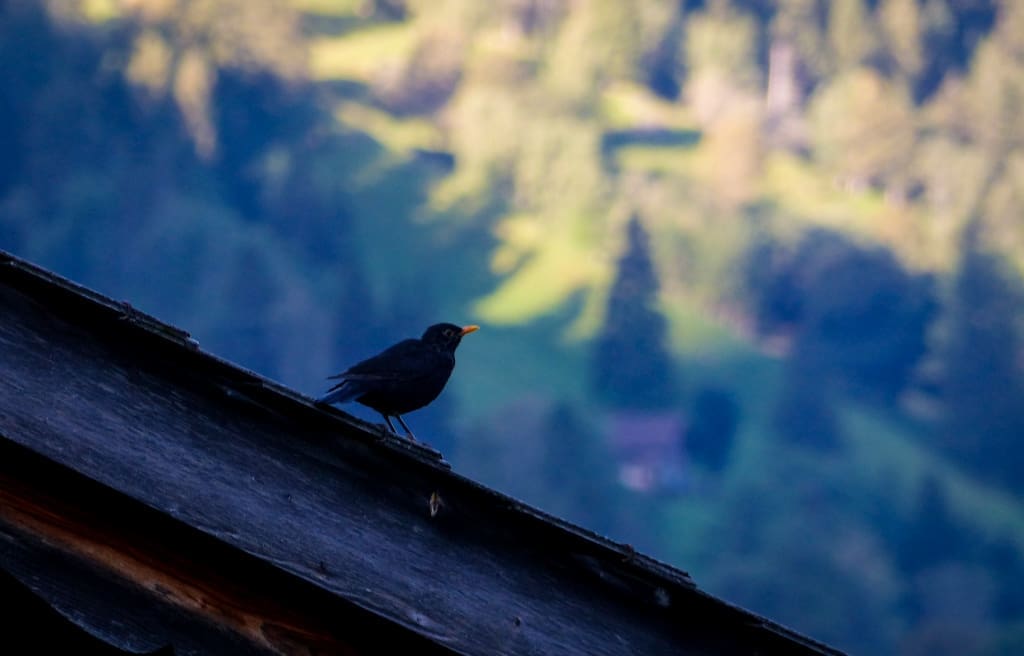
Alpine — the word draws breath from the Alps, the mountains that hulk over Central and Western Europe. Running west to east, the Alps cut through eight countries including Austria, Germany, Italy and France, but in Switzerland they dominate the topography to the utmost. Compared to the formidable Himalaya, they are but buttons, but latitude ensures that they are snow-capped. My hotel, which has splendid views of the mountains, is famous for a hot spring and a Roman-style spa, but it is the garden that piques my interest.
A light rain glazes the morning as I scan the treetops for birds. A rich fluting song draws my eye to a gabled roof, where a soot-black form is outperforming itself. A Eurasian Blackbird (Turdus merula) seems to be one of a scattered family of adults and juveniles that make their presence felt.
Blackbirds are thrushes. And thrushes are singers. The glossy black male begins an interminable warbling while the youngsters put on a screeching concert every time they wanted to be fed. Up close, I see the fleshy gape at the base of their bills. Prettiness does really take its time.
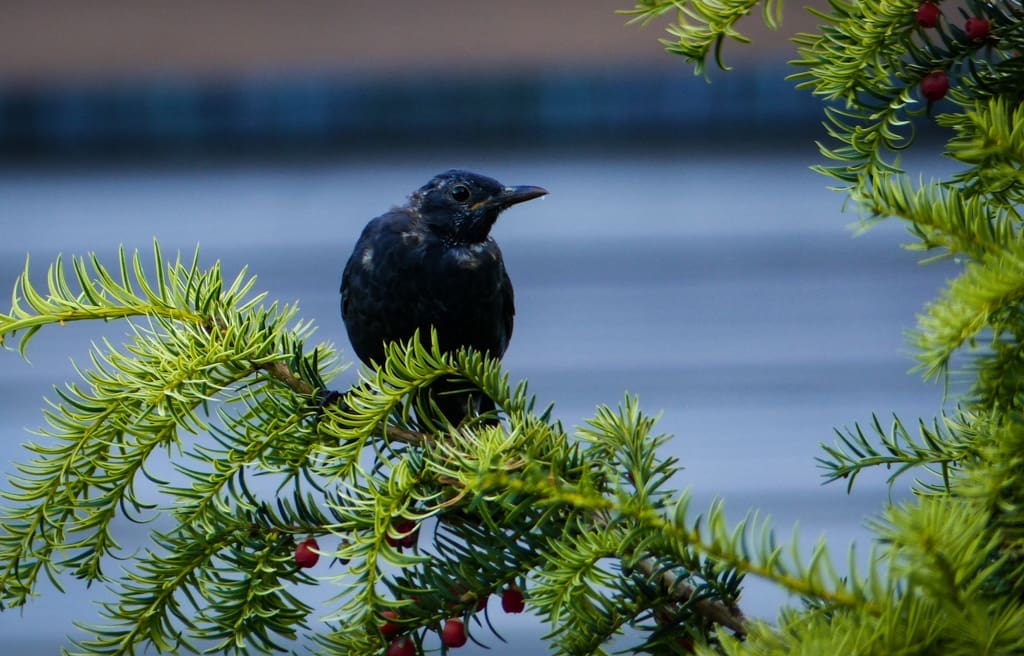
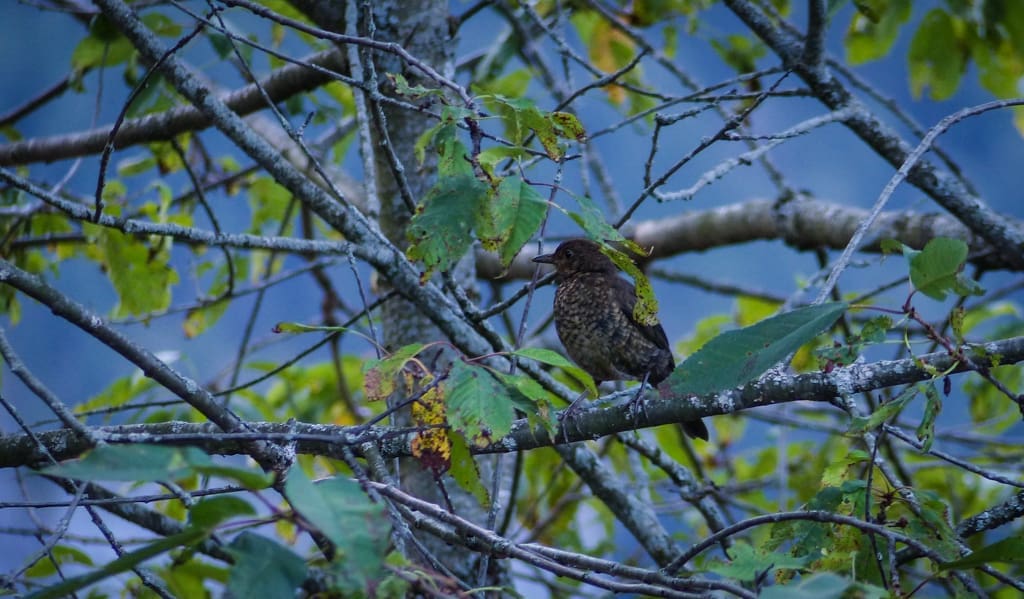
Turns out that the gable is coveted real estate. As soon as the adult blackbird is gone, a hesitant chirping gets my attention. A female Black Redstart (Phoenicurus ochruros), its pale eye-ring bright in the morning light, now occupies the perch. It is soon driven away by an inquisitive Spotted Nutcracker (Nucifraga caryocatactes), a variegated corvid with an imposing personality and an inexhaustible curiosity.
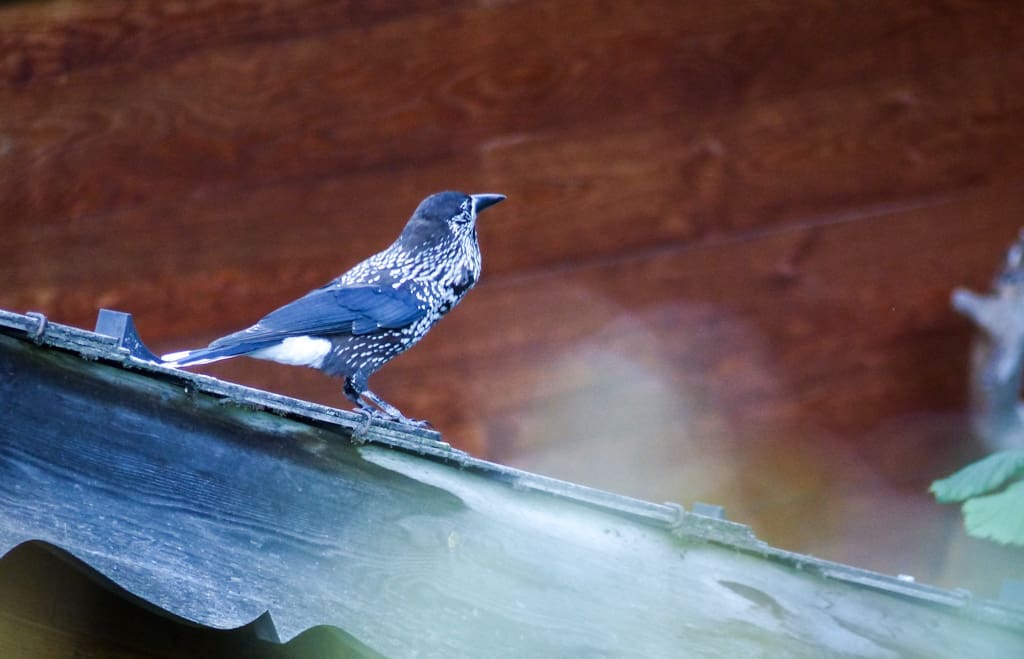
House Sparrows (Passer domesticus) flock on the lawn, picking away at unseen seeds. A White Wagtail (Motacilla alba) makes a brief appearance. In the shrubbery, a Coal Tit (Periparus ater) forages while at the apex of a bush, a Red Crossbill (Loxia curvirostra) holds fort. Some of these birds are so fidgety and so distant that I barely manage blurry record shots, but they are a delight to observe with my binoculars.
Mountaineering by train
I gaze at the eternal spires of the peaks rising from the folded earth. Grindelwald is a tourist magnet, attracting sightseers and alpinists in summer and skiers in winter. The storied alpine landscape is linked with many names, most notably that of Adolf Guyer-Zeller, the visionary Swiss industrialist credited with building the highest railway in Europe — the Jungfraubahn. The meter-gauge rack railway, which runs from Kleine-Schedegg at 2,061 m (6,762 ft) to Jungfraujoch at 3,454 m (11,332 ft), offers breathtaking views of the majestic alpine scenery from the warm comfort of a train window.
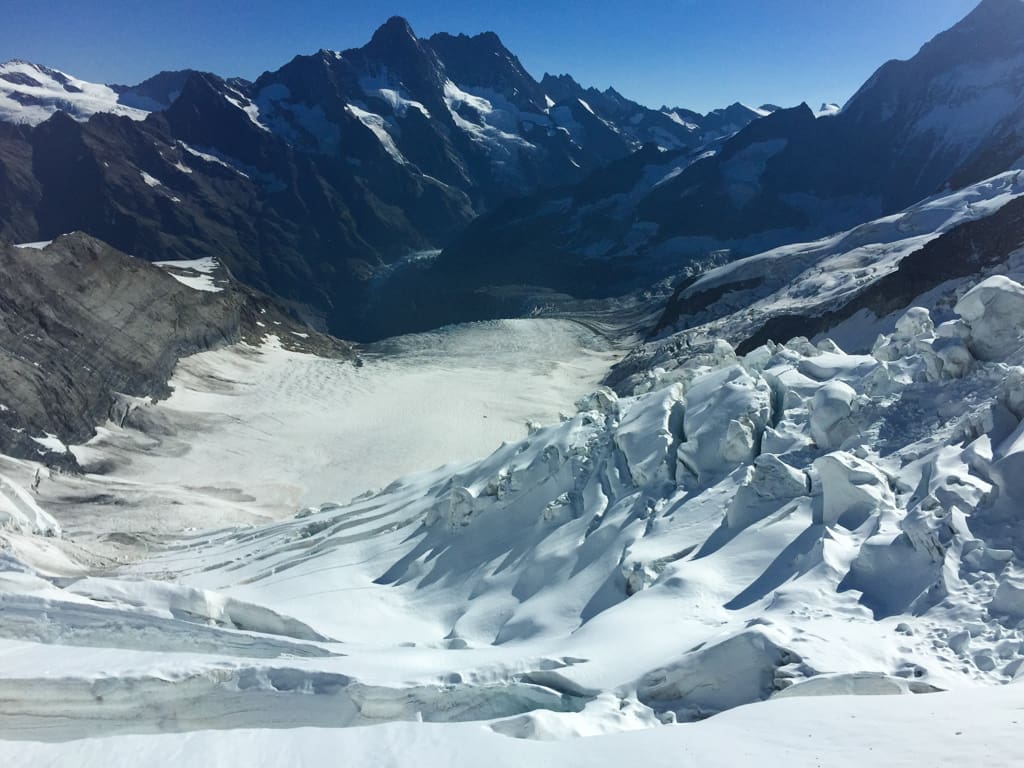

Up in the lap of the Aletsch Glacier, the largest glacier in the Alps, we are flanked by a trio of snow-draped peaks — Eiger (3,970 m, 13,025 ft), Mönch (4099 m, 13,448 ft) and Jungfrau (4,158 m, 13,642 ft). Legend has it that the monk (Mönch) protects the young virgin (Jungfrau) from the ogre (Eiger). Access to this alpinists’ playground in the canton of Valais is made easier by an elaborate change of trains starting at the terminus of Interlaken Ost. The town, nestled between the twin lakes of Brienz to the west and Thun to the east, are linked by the Aare River. A funicular railway, the Harderbahn, shinnies up the rugged flanks of these forested hills to the elevated vantage of Harder-Klum, while the Schynige Platte mountain railway links to the Bernese Mountain Railway at Wilderswil.
The Aletsch glacier is the playground of winter sports enthusiasts but in summer, the trains bring endless crowds of tourists to marvel at this snow-white wonderland in the Swiss Alps. The train stops at Eismeer (literally, sea of ice) for tourists to take in the view through enormous windows. Inside the tunnel, it is heated and comfortable. Outside, snow clings to our feet and the crisp barks of Swiss mountain dogs fog the air.
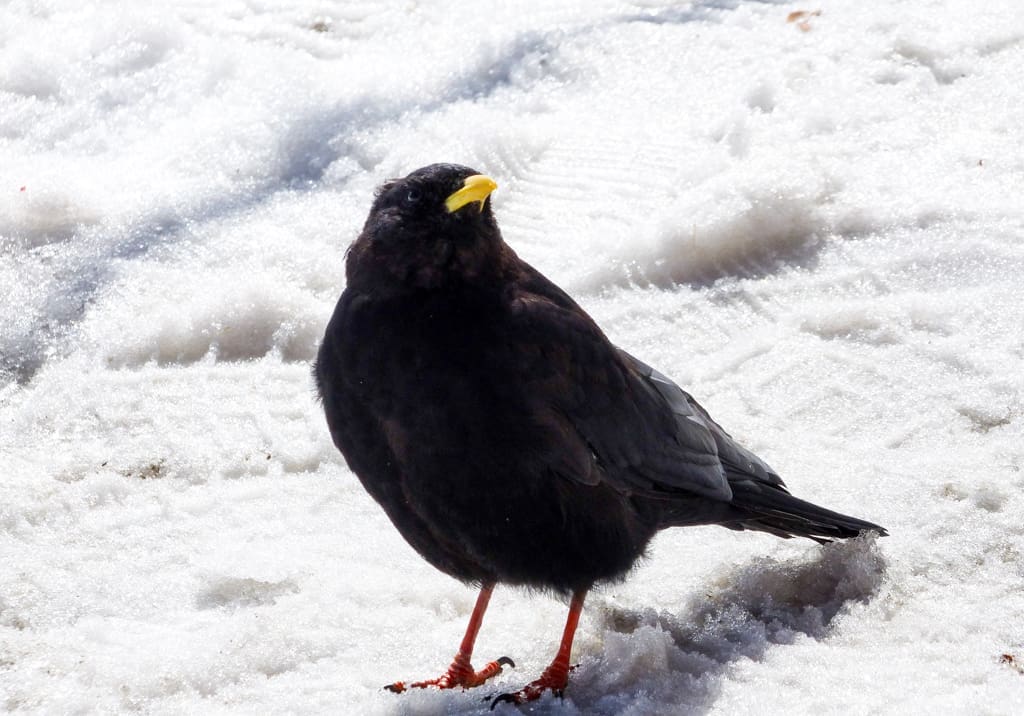
A Yellow-billed Chough (Pyrrhocorax graculus) appears, boldly investigating the knapsacks of unsuspecting tourists. It is a personable bird, cheeky and confiding with a curious chattering song (ALSO READ: Chuffed by a Chough) almost like a starling’s. It does not have the brooding mien of its cousin, the Common Raven (Corax corax), of whom we catch a fleeting glimpse as it sails past the cliffs on outstretched wings, barely flapping even as it is tossed about in the wind.
Wind and water
Hiking towards the cliff walk at First (that’s the name) from Grindelwald, we pass meadows filled with wildflowers. Brown, fleshy slugs cross the track, looking like turds come alive. A European Garden Spider weaves a cryptic web, hoping to trap some of the abundance of winged insects for its meal. In a dainty arbour of irises and crocuses, a furry bumblebee bumbles about, nectar dripping from its lips, trousers dusted with yellow pollen.
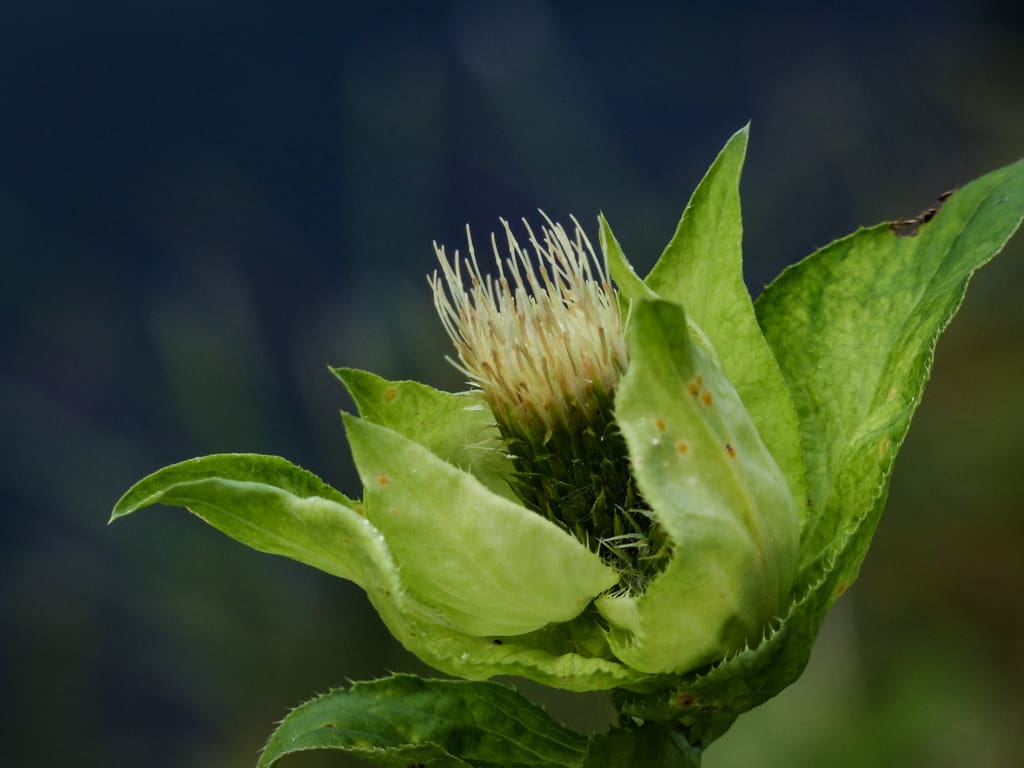
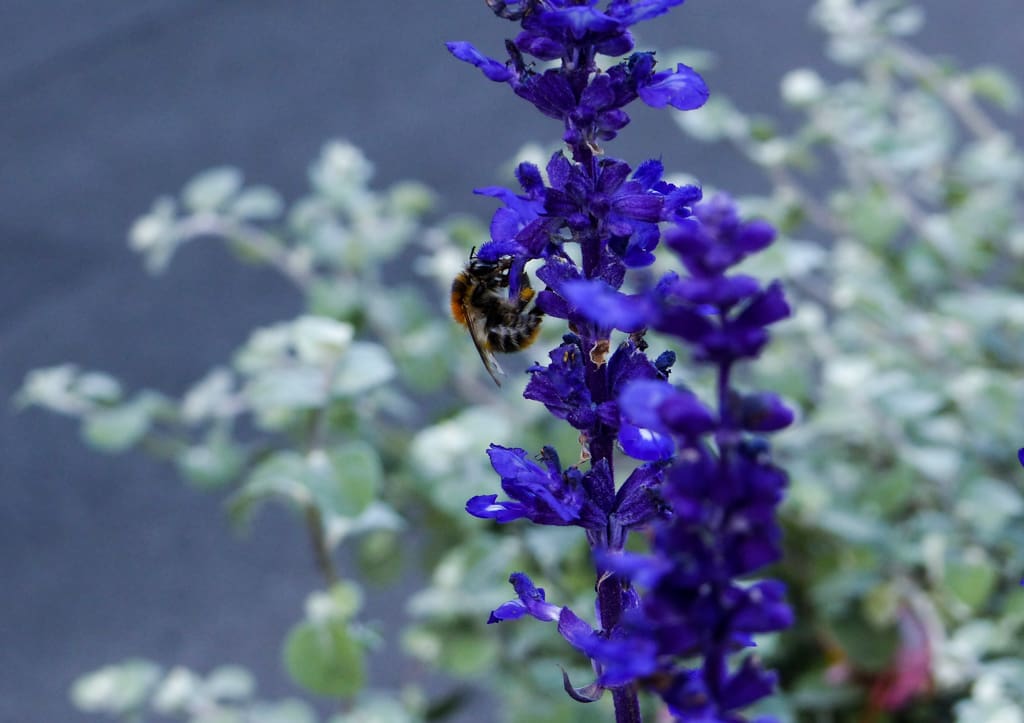
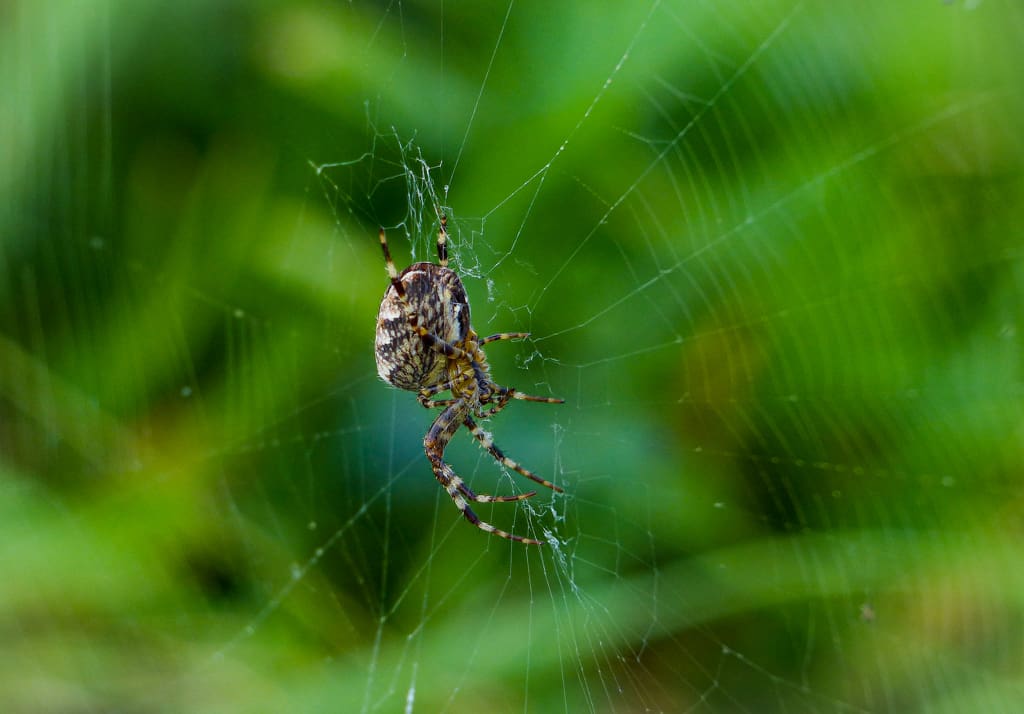
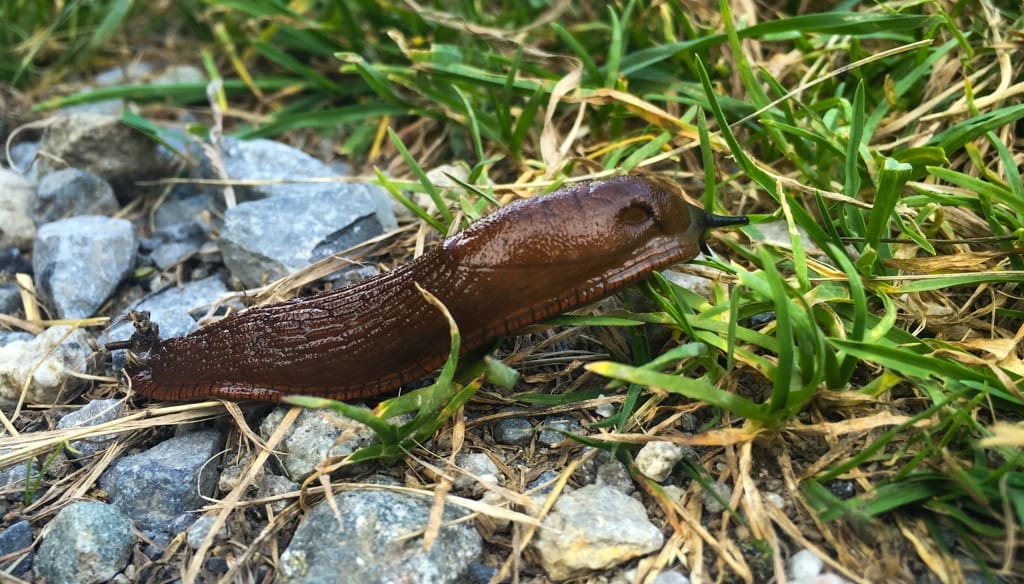
By the shores of Lake Brienz, the clouds give us respite. The water is pale turquoise, like a swimming pool, and I worry if it supports any life. Christian, a local guide, assures us that it is the natural colour of the water, lent by the minerals that seep into it from the Aletsch glacier via the Aare.
Mute Swans (Cygnus olor) and Mallards (Anas platyrhynchos), along with flocks of noisy Brown-headed Gulls (Chroicocephalus brunnicephalus), stipple the vitreous surface of the lake. The swans, one of whom is a juvenile, are unexpectedly aggressive towards the other birds, and they shoo away the ducks and gulls vigorously. A far cry from the swans of folklore and fable, these urban birds look rather morose and grumpy up close. Yet, I marvel at their exquisite grace and beauty and I’m eager for them to eat out of my hand. But I’m not carrying anything a swan might like to eat, so I munch on a bar of chocolate as the swans look on ruefully.
My gaze is drawn to a Common or Eurasian Coot (Fulica atra), a familiar bird to most Indians, as it swims placidly beside the chattering gulls, ignoring the venal glares of the swans. I’m puzzled to see a coot so much at ease in the open water in the absence of shore vegetation. Back home, I am used to seeing them where they can easily seek the shelter of reeds.



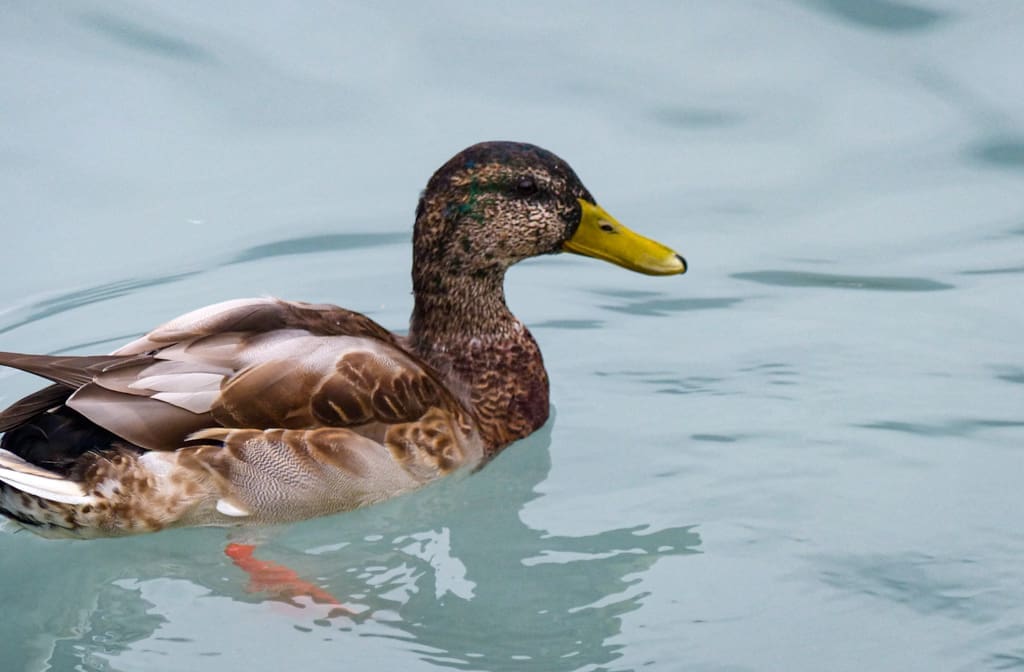
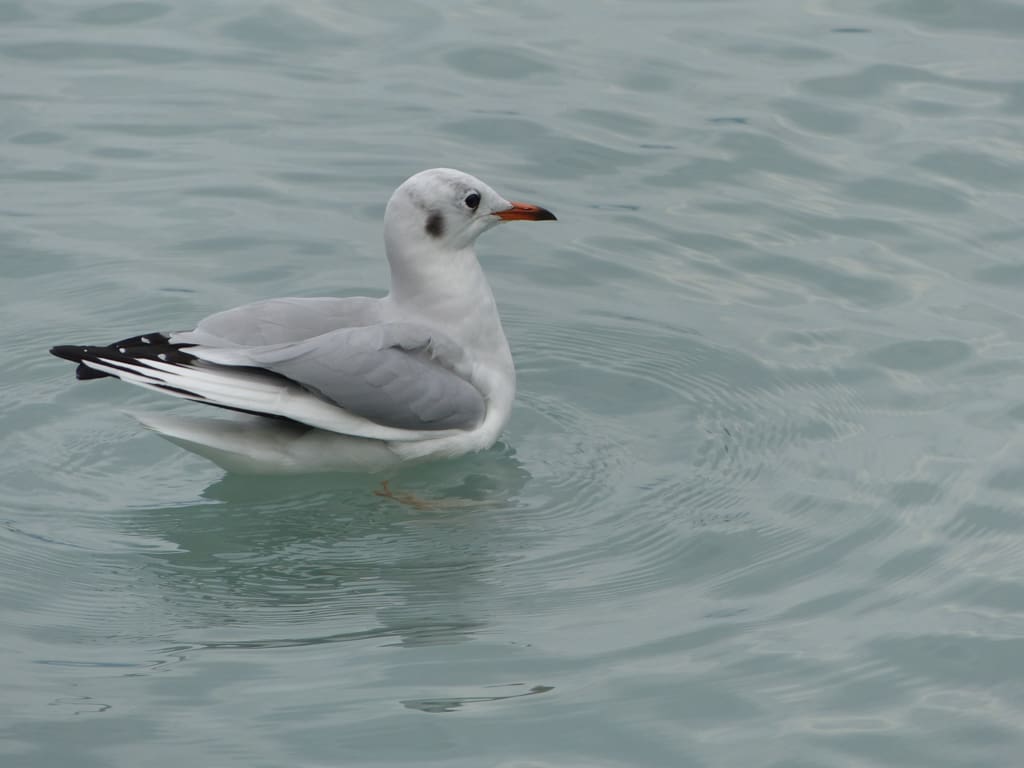
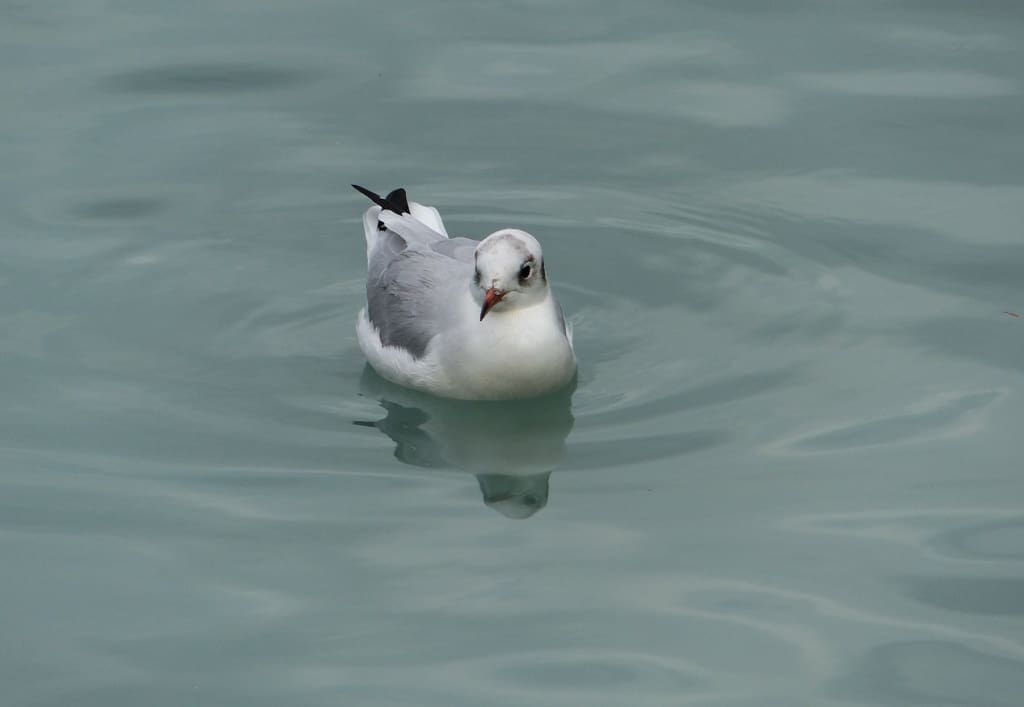
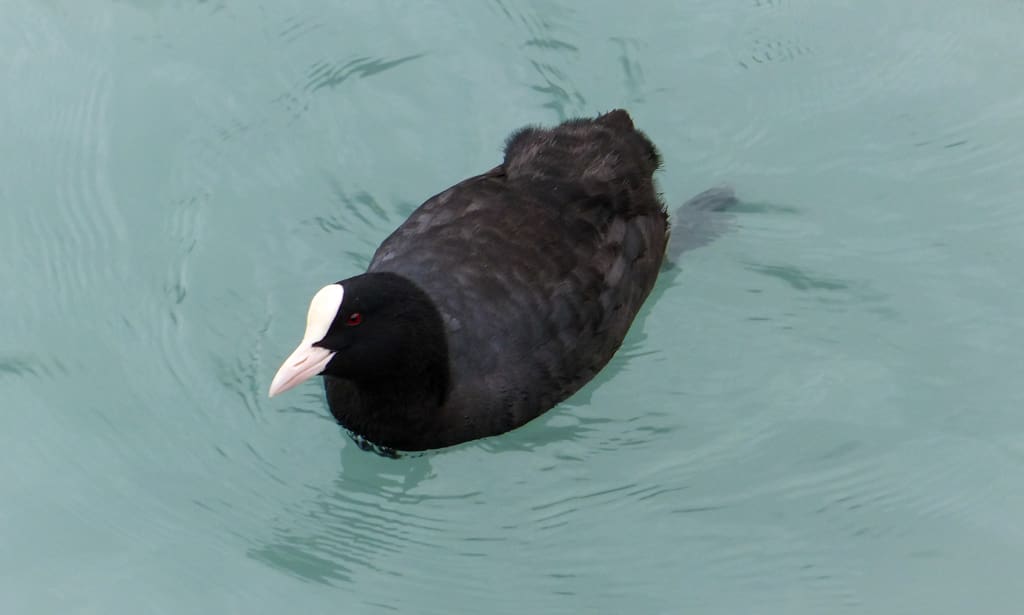
On the bank, a curious little passerine bird forages alongside the House Sparrows. I inch closer to get a better look, and I find it to be confiding and unafraid, probably habituated to being fed by those who toss morsels to the swans. It is a female Chaffinch (Fringilla coelebs), and I identify it by the twin white stripes on its wings. It takes me a while to look it up, as the online field guides, rife with sexism, place emphasis on the showy males of the species. Chaffinches are common in European gardens, but this is my first sighting of one. It hops close to my feet, hoping that I will produce a treat from my pocket. It is endearing to watch, but also a tad disturbing.

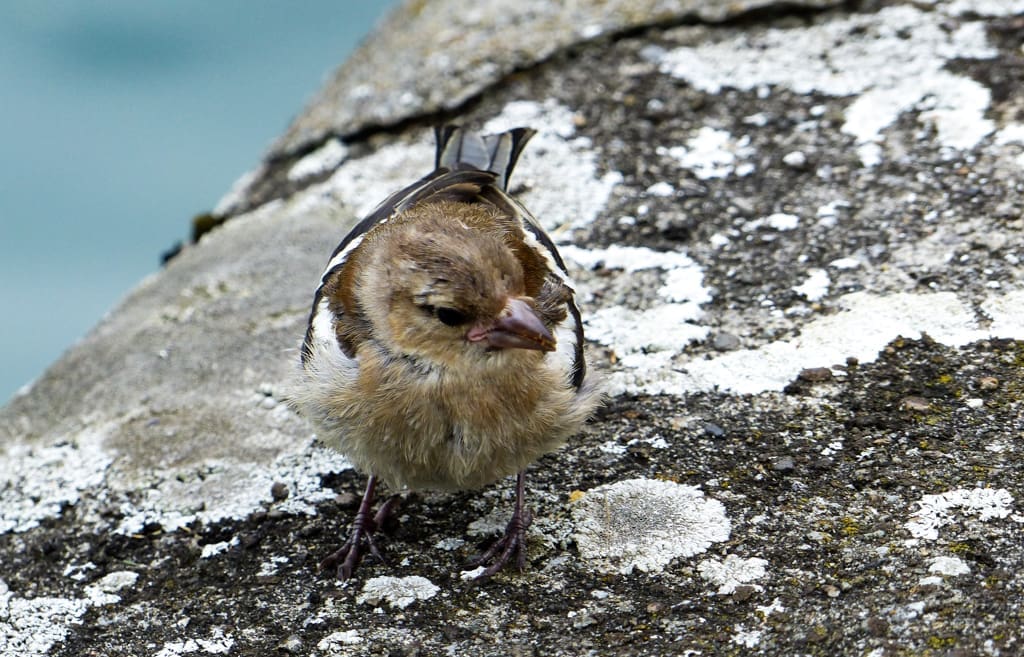

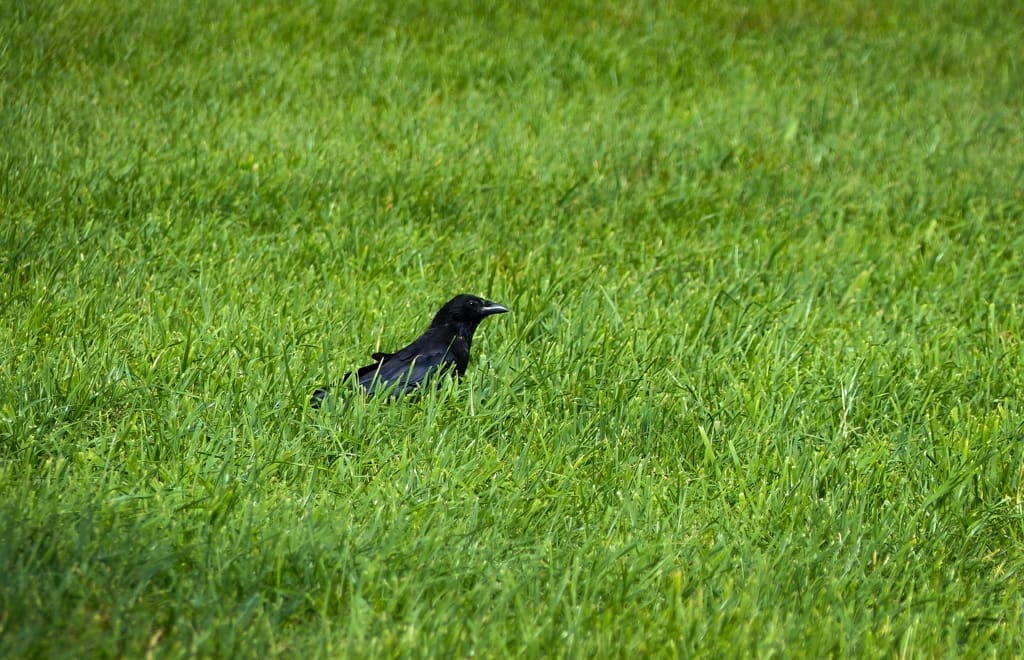
In the tourist hub of Interlaken, which nestles in a trough surrounded by rugged hills expanding into deeper vistas of snow-capped mountains, the sky is murky with a brewing storm. Birds are relatively scarce here, but that most opportunistic of foragers, the Carrion Crow (Corvus corone), is busy rooting about for a snack. Ravens, choughs, blackbirds… it strikes me that the stars of the snow-white Swiss Alps are mostly black. I spend the better part of an afternoon observing a few charismatic crows, which, like crows anywhere, are a delight to watch. They hide in the grass, poking their bills into everyone’s business, and keep a watchful, gleaming eye on unexpected surprises that tourists may drop.
I keep my wits about me and check my pockets. I meet the crow’s stare in the eye. We smirk knowingly at each other. Rain starts to patter. I have a train to catch.
- Indian Nightjar, Sweet Child O’Mine - February 21, 2024
- TL;DR – What colour are a Black-winged Kite’s eyes? - February 13, 2024
- TL;DR – White-naped Woodpecker Double Bill - November 16, 2023

